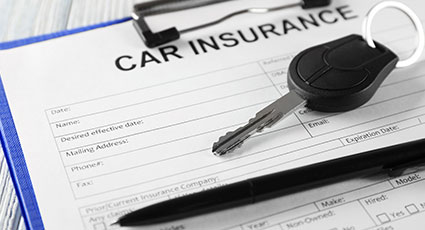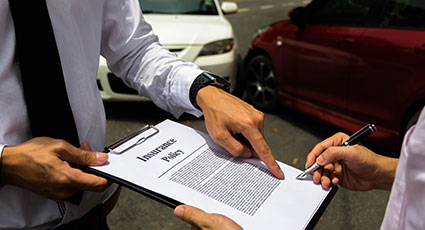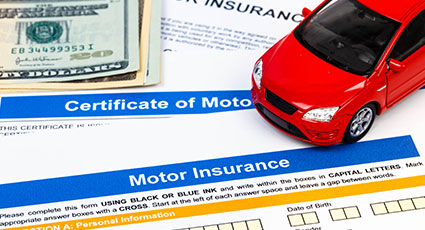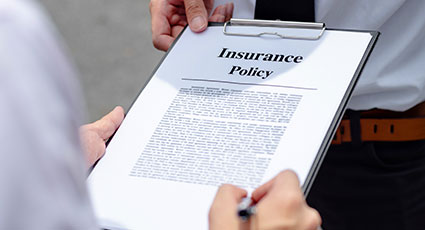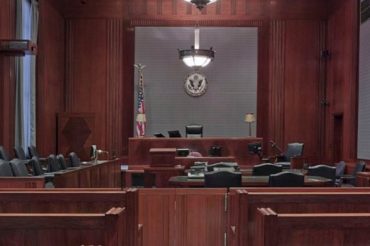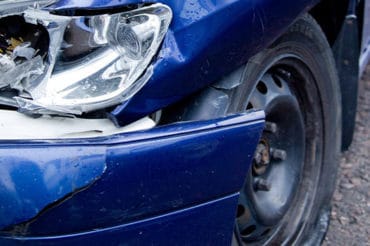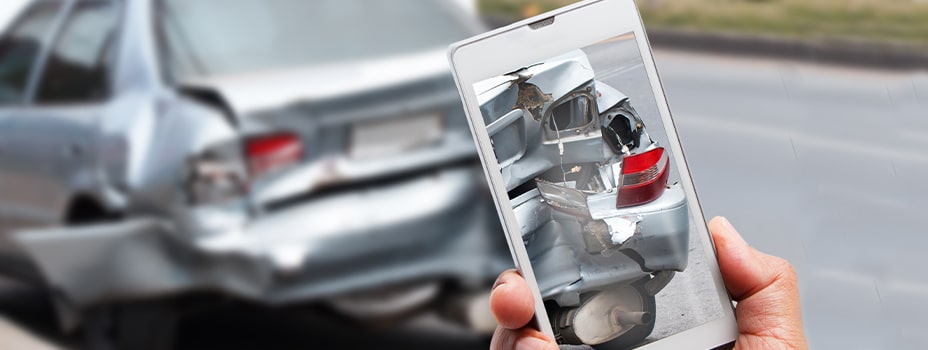
Choosing the right auto insurance policy to keep you protected should you be involved in a car accident is essential. To help you make the right decision, you’ll need to understand the different types of coverage and how they protect you and your vehicle.
Auto Insurance Coverage Defined
Types of Auto Insurance Coverage
In Florida, auto insurance coverages include No-Fault or PIP coverage, Bodily Injury Liability Coverage (BI), Uninsured or Underinsured Motorist Coverage (UM) which can be stacked or non-stacked, Property Damage Coverage (PD), Medical Payments Coverage (Med Pay), GAP Insurance, and Rental Car Coverage just to name a few.
Only Personal Injury Protection (PIP) and Property Damage Insurance Coverage (PD) coverages are required by law in the state of Florida, and often insurance officers will sell you what they term “Full Coverage” which, often times, leaves you exposed in the event of an accident. Though the other coverages named above are optional, it is highly recommended that most, if not all, of these coverages, be carried on your policy. After all, insurance is meant to protect you in the event you are involved in unforeseen and unplanned circumstances, so having insurance coverage which leaves you exposed isn’t really insurance at all.
I have personally had hundreds of clients over the years who explain to me during our initial consultation that they were told they had “Full Coverage.” In every case, they assumed, as anyone would, that full coverage meant they were covered for every foreseeable circumstance should they be involved in an accident. After I explain what “Full Coverage” means in the state of Florida they are almost always upset that the insurance company took advantage of their lack of knowledge and claimed to sell them something that they were not given.
Navigating the ins and outs of insurance coverages can be confusing and time-consuming but always remember that after its all said and done you want to have the coverage in place that will protect you and your loved ones in the unfortunate event that you are involved in an incident where you need full protection.
Bodily Injury Coverage (BI)
Bodily Injury Coverage is the type of auto insurance coverage that protects you if you are the at-fault driver in an accident. It compensates the victims of your negligence for their injuries in the event the incident was significant enough to cause injury. This is considered one of the two most important coverages to have (the other being UM), and unfortunately, it is not required by law in the state of Florida.
The minimum BI coverage available is called a $10,0000/$20,000 BI policy, which means that any one person is afforded no more than $10,000 and collectively, all victims are afforded no more than $20,000. BI coverages range from $10,000/$20,000 to a million dollars and sometimes more. It is always recommended to carry at least some level of BI, and the more you carry, the more protected you are.
Uninsured or Underinsured Motorist Coverage (UM or UIM)
UM, or UIM coverage is coverage purchased to cover you and your loved ones in the event that you are either involved in an incident with an at-fault driver that does not carry BI or does not carry enough BI in light of the injuries you have sustained.
Years ago, I had a wrongful death case where the victim was struck by an at-fault driver who ran a red light, struck my client, and he passed away at the scene. The at-fault driver only carried a $10,000/$20,000 BI policy, and the client’s surviving family members did not carry Underinsured Motorist Coverage (UIM). As a result, the only available compensation was the $10,000 coverage. This is an extreme case but clearly illustrates the importance of UM/UIM coverage and how it impacts cases with serious injury and low coverage.
Uninsured or Underinsured Motorist Coverages are optional coverages in the state of Florida, but it is highly recommended to carry this coverage as it is the only way to protect yourself in the event that you are involved in an incident with an at-fault driver who is either uninsured or underinsured.
According to the Insurance Information Institute, Florida has the highest rate of uninsured motorists at an alarming rate of 26.7%. Below are the highest and lowest ranked states in terms of uninsured motorists, and this statistic alone clearly identifies the importance of carrying UM/UIM coverage while driving in our state.
| Highest | Lowest | ||||
|---|---|---|---|---|---|
| Rank | State | Percent Uninsured | Rank | State | Percent Uninsured |
| 1 | Florida | 26.7% | 1 | Maine | 4.5% |
| 2 | Mississippi | 23.7 | 2 | New York | 6.1 |
| 3 | New Mexico | 20.8 | 3 | Massachusetts | 6.2 |
| 4 | Michigan | 20.3 | 4 | North Carolina | 6.5 |
| 5 | Tennessee | 20.0 | 5 | Vermont | 6.8 |
| 6 | Alabama | 18.4 | 6 | Nebraska | 6.8 |
| 7 | Washington | 17.4 | 7 | North Dakota | 6.8 |
| 8 | Indiana | 16.7 | 8 | Kansas | 7.2 |
| 9 | Arkansas | 16.6 | 9 | Pennsylvania | 7.6 |
| 10 | D.C. | 15.6 | 10 | South Dakota | 7.7 |
Stacked UM or UIM Coverage on One Policy
UM/UIM can be purchased as Stacked or Non-Stacked, and the basic gist of this coverage is that your UM/UIM policy limits will be stacked (multiplied) by the number of vehicles on your policy.
An example would be if you carried $10,000/$20,000 Stacked UM/UIM policy and had three (3) vehicles on your policy the limits would be multiplied times (3) for the vehicles and would result in a total of $30,000/$60,000 in total coverage.
As you can see, having a stacked UM/UIM policy greatly increases your insurance coverage in addition to other benefits it provides.
Stacked coverage generally applies to “Class I” insureds: the named insured, spouse, and resident relatives. Stacked UM coverage follows the insured members under the policy. This means that regardless of what car or vehicle you are in you, and all other insureds will be afforded the coverage.
Unless you reject the UM coverage in writing, stacking of UM coverage is presumed. When you purchase your insurance policy, you will be given the opportunity to accept or reject UM/UIM and so long as you do not reject this coverage in writing with your signature you will carry this coverage.
Stacked Coverage Across Separate Policies
You can also have UM/UIM coverage stacked under separate policies where you carry stacked coverage on both policies, and your insurance coverage will be multiplied by the number of vehicles listed under all of the policies which apply.
Unstacked Coverage
When you do not choose to have your UM/UIM coverage stacked, you will only be afforded coverage for the vehicle involved in the incident.
Multiple vehicles can be on the same policy, but an insured under the policy only gets the benefit of each individual vehicle’s coverage.
You can still have as many vehicles as you would like on one insurance policy, but each vehicle will be treated individually when you choose not to stack your UM/UIM coverage.
Property Damage Insurance Coverage (PD)
Property Damage Insurance Coverage (PD) misused in the event that you are in an accident where you either are the at-fault driver and cause property damage to another’s vehicle or personal property or you are involved with an uninsured motorist and need to repair your own vehicle’s property damage.
PD Coverage is required by law in the state of Florida and can range in policy limits from $10,000 minimum to as much as you’re willing to purchase.
Additionally, when you’re involved in an auto accident and liability is disputed, your own PD insurance will cover your car’s damages until the liability issue is resolved at which point, they will be reimbursed when and hopefully if you are found not to be at fault.
Personal Injury Protection Coverage (PIP)
Personal Injury Protection Coverage, also termed No-Fault Coverage in the state of Florida, is what each party in an accident will use for the first $10,000 in medical care they need for any injuries sustained in this incident.
PIP can also be used for lost wages, mileage reimbursement (for miles driven for injury treatment) and prescription reimbursement for prescriptions given for injuries sustained in the accident.
Personal Injury Protection Coverage is required by law in the state of Florida and begins with $10,000 in coverage as the minimum.
Health Insurance
Medical Payments Coverage
Medical Payments Coverage is the medical equivalent of GAP insurance and will cover any deductibles or copays you have under your PIP policy. It is a good idea to carry Medical Payments Coverage as it results in no out of pocket expenses for you medically up and until you reach the limits of your coverage.
Medical Payments Coverages typically range from $5,000 to as much as you’re willing to purchase.
Think Ahead When Thinking of What Auto Insurance Coverages to Purchase
Always remember you are planning ahead by purchasing insurance in the event that you are involved in an unplanned event (an accident). You will always benefit from having all insurance coverages available, and in the long-term, you are paying much less for your premium now when compared to what you will pay for your losses in the event you are involved in an accident.
You must plan for yourself in addition to the event that you are involved in an incident with an uninsured motorist as well as the event that you, for some reason are found at fault for an accident. In short, you always want to be protected when purchasing an insurance policy. After all, this is the exact reason that you are purchasing the insurance policy in the first place.
Purchasing Insurance After An At-Fault Crash Where You Were At Fault
As discussed, you should carry automobile insurance coverage at all times but, in the event, you are not insured at the time of a crash, you can and should purchase car insurance immediately after a crash. When you purchase your insurance policy, you must inform the insurance company that you had an uninsured crash and request that they issue you an SR-22 certificate of liability. You must provide this to DHSMV for three years after you have a car accident without insurance.
An SR-22 certificate is never a good thing to have as you are required to pay premiums in full, which can be financially taxing. That being said, this law affords those who were not insured at the time of a crash an opportunity to obtain coverage in the future with minimal penalty.

